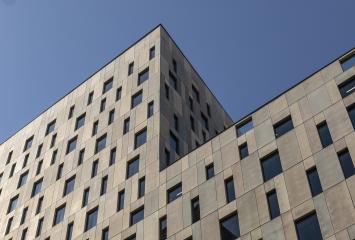Advantages of integrated voice technology in the office
Some computer systems have the capability to receive and process voice commands without the need for any additional physical hardware. They recognize human speech, understand it in its proper context, and respond to it appropriately and efficiently to meet the users' needs: opening a door, turning on lights, taking a photo with a mobile phone, opening a program on a computer, or making a call. These are known as integrated voice technologies, and in recent years, they have managed to penetrate not only people's private sphere but also the professional sphere, especially in office environments.
Characteristics of integrated voice technology
One of the main characteristics of these technologies is their interoperability: they can easily integrate with a wide variety of electronic devices and building systems such as lighting systems, security systems, sound systems, or energy efficiency systems. Additionally, integrated voice technology is also characterized by advanced accuracy in voice recognition even in noisy environments or with diverse accents, high degree of customization and configuration, and a high level of security to access it, essential since it controls such critical building systems.
On the other hand, the most qualified versions of this technology also provide clear and concise feedback through auditory, visual, or even tactile responses depending on the context and user preferences. Finally, it is important not to overlook two of its most interesting qualities: its updateability to increase its capabilities and its scalability, which allows it to adapt to different sizes and types of buildings. After all, each office is a unique world with its own rules, requirements, and limitations. A world that also evolves continuously.
Benefits of installing integrated voice technology
From the characteristics described above, a myriad of benefits can be derived. Among them, greater convenience in building and office management, a higher degree of customization of the environment, an improvement in the sustainability of the company's activities within the office by being able to program and process ecological actions with total simplicity, and of course, an improvement in accessibility. After all, voice control systems provide people with physical diversity with a friendlier way to interact with their surroundings. From opening and closing doors to turning lights on and off, raising and lowering blinds, or adjusting the temperature.
But we can't forget about productivity. After all, the sum of small tasks that require small moments results in a large amount of time invested throughout the day, something that integrated voice technology saves. Workers can ask the system to schedule meetings, reserve rooms, request supplies of any kind, or send an alert to other colleagues. This way, the team not only saves time but also gains accuracy. In this sense, the initial investment in purchasing and installing integrated voice technology systems is quickly rewarded in the company's results.
Lastly, there's the experience of the employees themselves. The fact that they can do away with certain trivial tasks and have more time in their workdays to dedicate to more creative activities generally increases their well-being. Additionally, the easy customization of the environment around them also helps them feel comfortable, free, and cared for, which, in turn, increases the retention rate of that professional talent. Even more so when voice technology is integrated with emerging technologies such as artificial intelligence or augmented reality to offer an even more comprehensive and profound experience. This is how the modern office should be.

